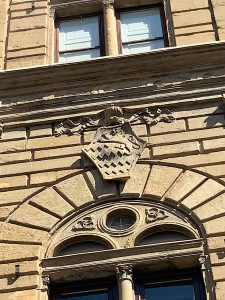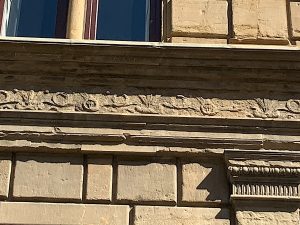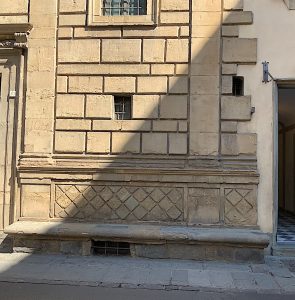
Age
1455-1470
Designers
Leon Battista Alberti, Bernardo Rossellino.
The Palazzo Rucellai, located in Via della Vigna Nuova, was commissioned by the rich merchant Giovanni Rucellai; it was built by Bernardo Rossellino to a design by Leon Battista Alberti who was linked to Rucellai by friendship and cultural affinity. Despite the importance of the building, whose façade is one of the fundamental models of the Florentine Renaissance, the dates of construction are not yet clear; certainly, the palace was built in different phases from 1455 until 1470 following the purchase of pre-existing houses located in the same area. Bernardo Rossellino took charge, through the new façade, of the unification of the various houses in a single complex. In the following two centuries, the palace was not affected by renovation works; in the fifties of the eighteenth century, on the occasion of the wedding of Giuseppe Rucellai with Teresa Pazzi, the interior underwent a profound transformation. The façade of the building is made with a smooth ashlar of Pietraforte Sandstone that forms a grid characterized by horizontal elements (the cornices and the street bench) and vertical (the smooth pilasters). On the ground floor, some pilasters divide the surface into spaces where the two classical rectangular portals open; this floor is higher than the upper floors and has capitals decorated with a reinterpretation of the Doric order. In front of the palace runs a “bench of way”, whose back reproduces the motif of the opus reticulatum romano. On the main floor there is a frieze containing the insignia of the Rucellai family and the family coat of arms that also appears above the portals, in addition to composite and mullioned windows. Finally, the top floor is characterized by Corinthian pilasters alternating with mullioned windows of the same type. At the top, the building has a slightly protruding cornice that hides a loggia adorned with monochrome paintings of the fifteenth century, attributed to Paolo Uccello. On the right the façade is incomplete, in fact, it does not end sharply, but is jagged because it was planned to continue with a third portal.
The smooth ashlars of the façade, the coats of arms, the friezes, the window decorations, the mullioned windows, the pilasters, the cornice, the bench is in Pietraforte Sandstone. The upper loggia has decorated Plasters.


